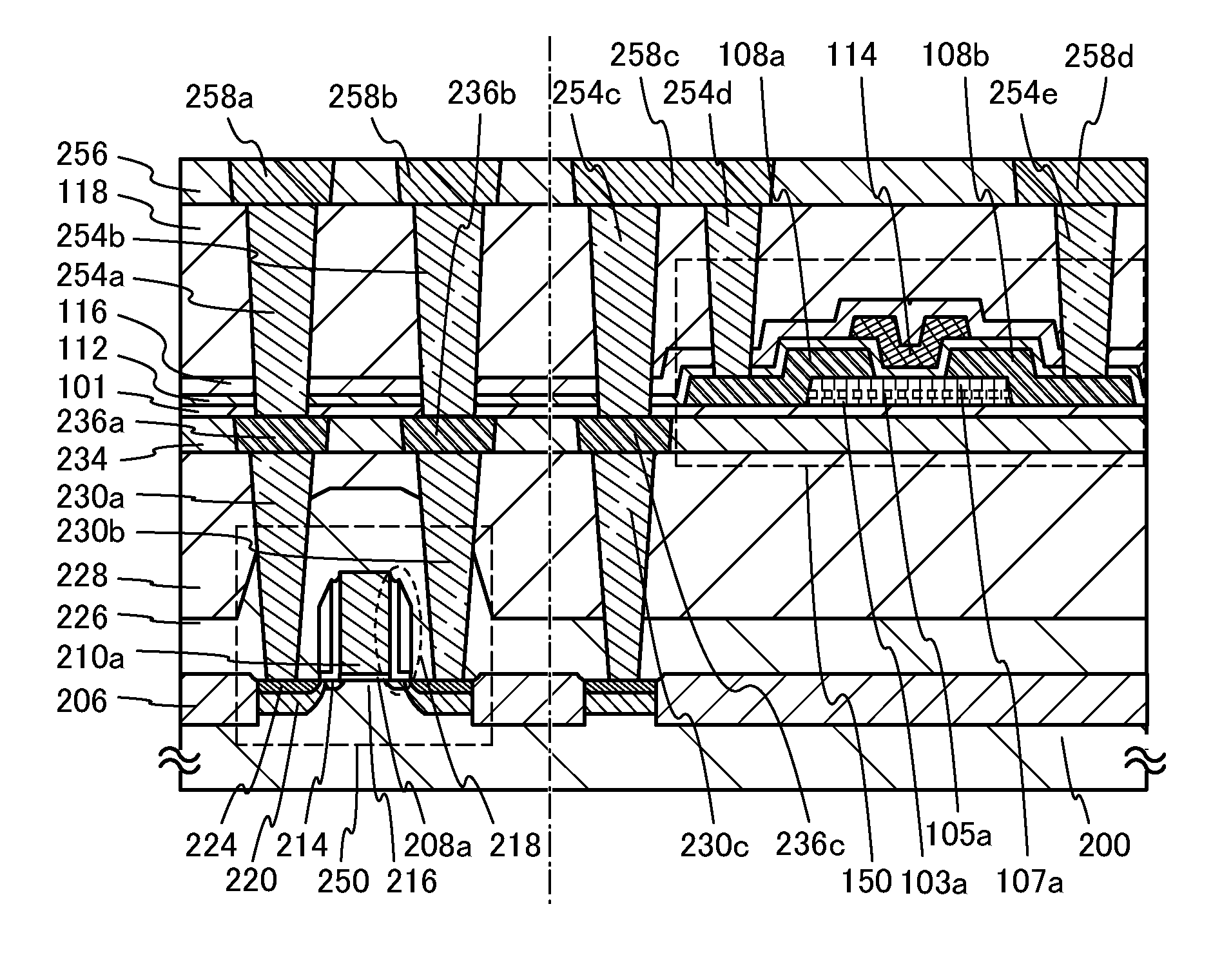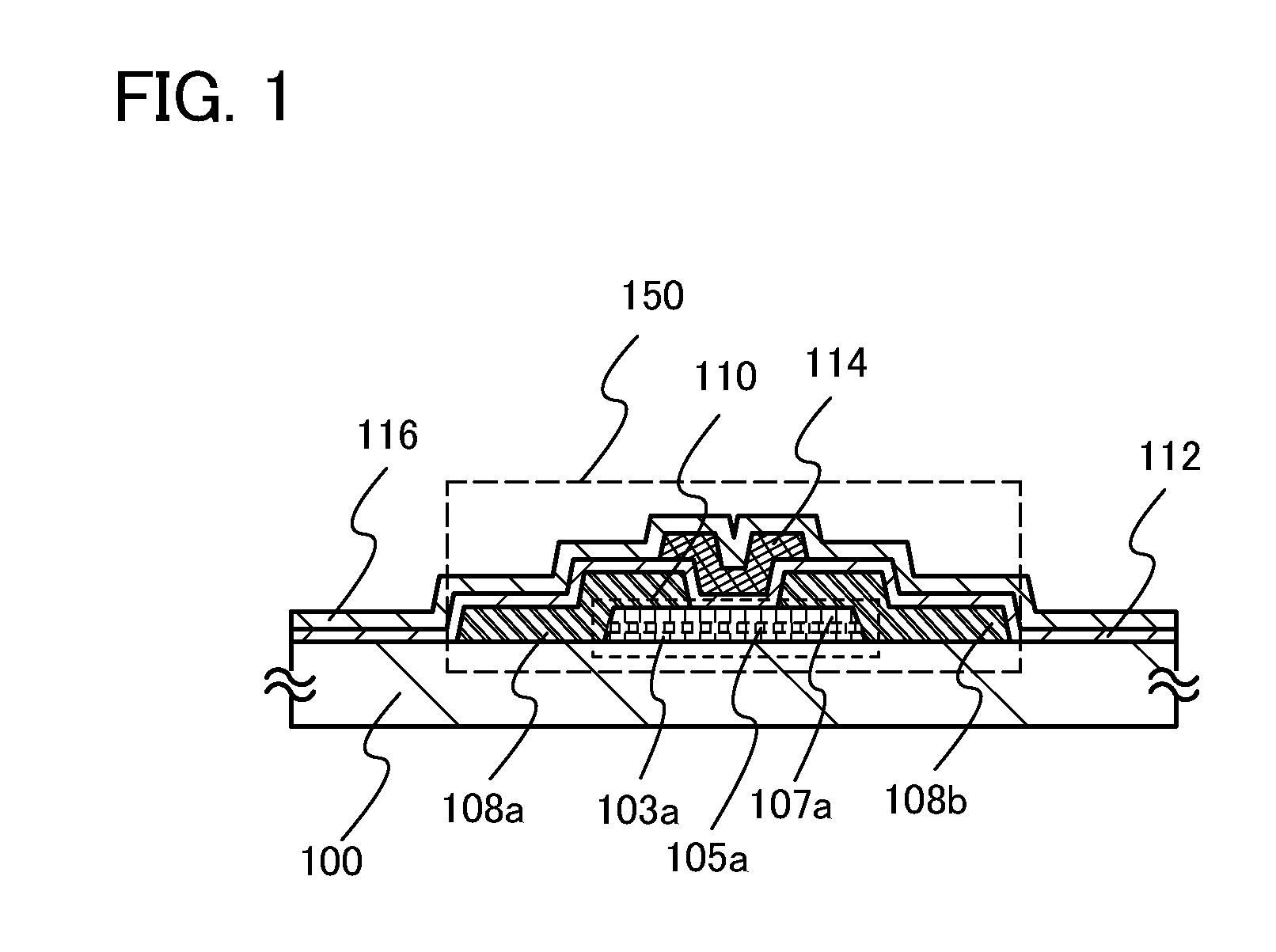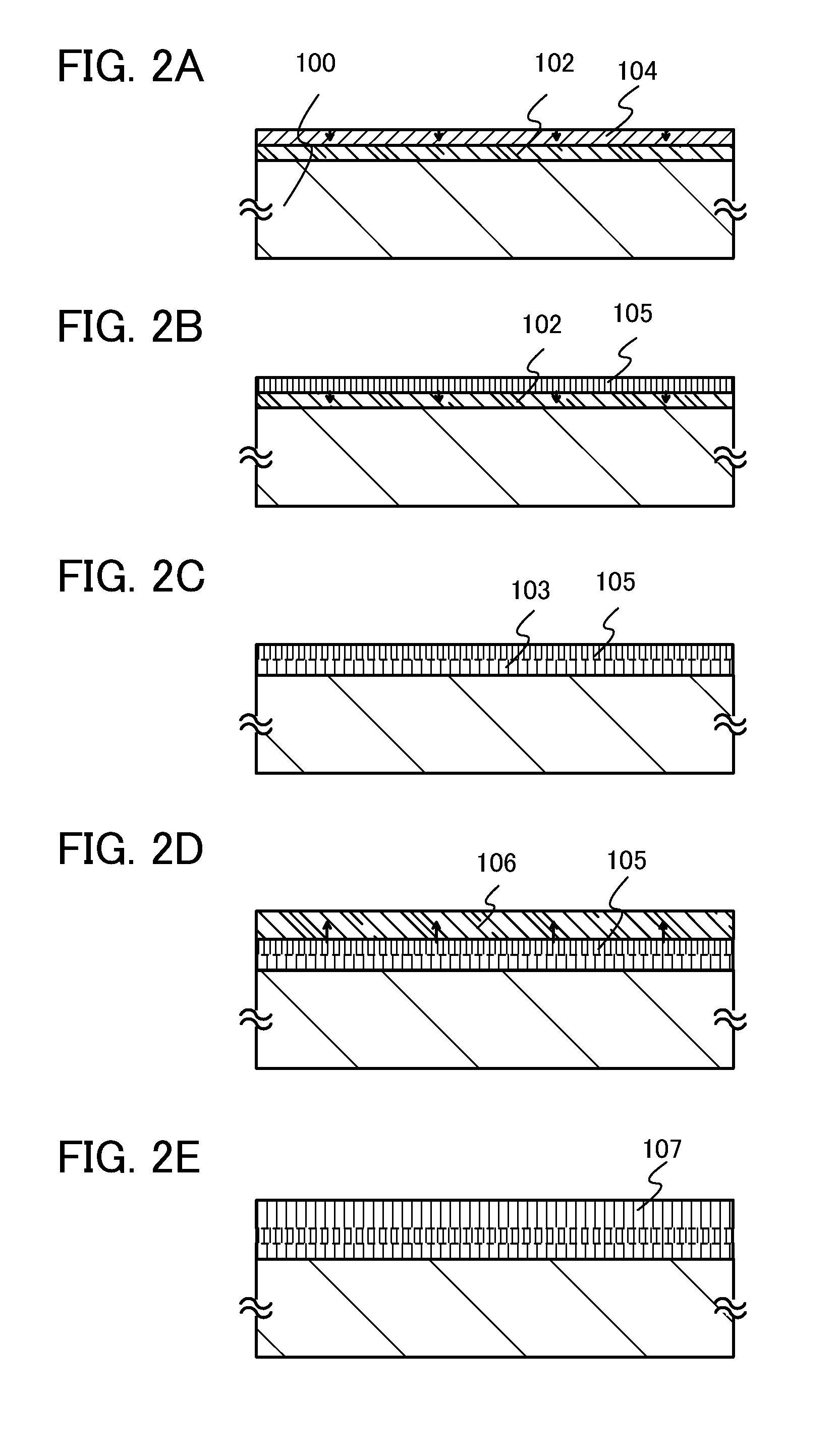Method for manufacturing semiconductor device
a semiconductor and manufacturing method technology, applied in the direction of semiconductor devices, electrical devices, transistors, etc., can solve the problem of limit on the transistor manufactured using oxide semiconductors, and achieve the effect of high field-effect mobility
- Summary
- Abstract
- Description
- Claims
- Application Information
AI Technical Summary
Benefits of technology
Problems solved by technology
Method used
Image
Examples
embodiment 1
[0052]FIG. 1 is a cross-sectional view illustrating a transistor 150 which is an embodiment of a structure of a semiconductor device. Note that although the transistor 150 described here is an n-channel IGFET (insulated-gate field-effect transistor) whose carriers are electrons, the transistor 150 can be a p-channel IGFET. In this embodiment, the transistor 150 having a top gate structure will be described.
[0053]In the transistor 150 illustrated in FIG. 1, a first multi-component oxide semiconductor layer 103a including single crystal regions, a single-component oxide semiconductor layer 105a including single crystal regions, and a second multi-component oxide semiconductor layer 107a including single crystal regions are stacked over a substrate 100 (an oxide semiconductor stack), and wirings 108a and 108b functioning as a source electrode and a drain electrode are formed thereover. In addition, a gate insulating layer 112 is formed over the second multi-component oxide semiconducto...
embodiment 2
[0112]In this embodiment, a manufacturing method of a transistor including a highly purified oxide semiconductor stack will be described as a manufacturing method of a semiconductor device according to an embodiment of the invention disclosed herein with reference to FIGS. 8A to 8E, FIGS. 9A to 9D, and FIGS. 10A and 10B.
[0113]An insulating layer 101 is formed over a substrate 100. Then, in a manner similar to that in Embodiment 1, a first multi-component oxide semiconductor layer 102 is formed over the insulating layer 101, and a single-component oxide semiconductor layer 104 is formed over the first multi-component oxide semiconductor layer 102 (see FIG. 8A).
[0114]As the substrate 100, the substrate 100 described in Embodiment 1 can be used as appropriate.
[0115]The insulating layer 101 is provided so as to reduce entry of an impurity into a layer formed over the substrate 100 and to enhance adhesion to the layer formed over the substrate100. The insulating layer 101 is formed using...
embodiment 3
[0174]In this embodiment, a method for forming the oxide semiconductor stack 110 which is different from those in Embodiments 1 and 2 will be described with reference to FIGS. 11A to 11D.
[0175]In a manner similar to that in Embodiment 2, an insulating layer 101 is formed over a substrate 100 as illustrated in FIG. 11A. Next, a first multi-component oxide semiconductor layer 102 is formed over the insulating layer 101, and a single-component oxide semiconductor layer 104 is formed over the first multi-component oxide semiconductor layer 102.
[0176]Then, in a manner similar to that in Embodiment 1, first heat treatment is performed, so that a first multi-component oxide semiconductor layer 103 including single crystal regions and a single-component oxide semiconductor layer 105 including single crystal regions are formed as illustrated in FIG. 11B. After that, a second multi-component oxide semiconductor layer 106 is formed over the single-component oxide semiconductor layer 105 includ...
PUM
 Login to View More
Login to View More Abstract
Description
Claims
Application Information
 Login to View More
Login to View More - R&D
- Intellectual Property
- Life Sciences
- Materials
- Tech Scout
- Unparalleled Data Quality
- Higher Quality Content
- 60% Fewer Hallucinations
Browse by: Latest US Patents, China's latest patents, Technical Efficacy Thesaurus, Application Domain, Technology Topic, Popular Technical Reports.
© 2025 PatSnap. All rights reserved.Legal|Privacy policy|Modern Slavery Act Transparency Statement|Sitemap|About US| Contact US: help@patsnap.com



